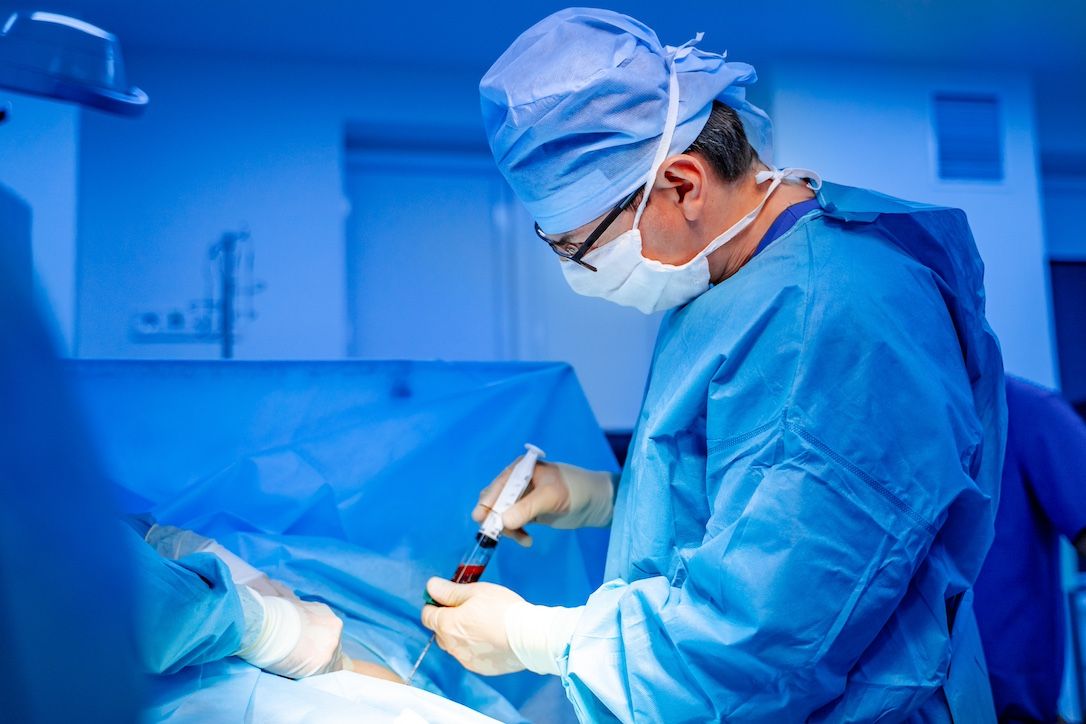- Center on Health Equity and Access
- Clinical
- Health Care Cost
- Health Care Delivery
- Insurance
- Policy
- Technology
- Value-Based Care
In AML, CAR T-Cell Therapy Has Higher CR Rate After Transplant
In this investigation, investigators sought insights into the safety and efficacy of chimeric antigen receptor (CAR) T-cell therapy in acute myeloid leukemia (AML), with a particular focus on how various patient subgroups fared for complete remission (CR).
A new meta-analysis suggests chimeric antigen receptor (CAR) T-cell therapy can be an effective treatment for people with acute myeloid leukemia (AML), particularly if they have had previous hematopoietic cell transplantation (HCT) and a specific conditioning regimen.
The report was published in Leukemia Research.
Study authors noted that the 5-year survival rate for AML is only about 32%. One problem is that many patients’ cancers are immediately refractory to chemotherapy, and not all patients are eligible to receive hematopoietic stem cell transplantation (HSCT). Given that scenario, they said new options are warranted.
Stem cell transplant operation | Image Credit: Vadim - stock.adobe.com

“Chimeric antigen receptor T-cell therapy is a new promising treatment which is currently being trialed in the treatment of chemotherapy refractory B-cell malignancies as well as for multiple myeloma,” they said. “The use of CAR T-cell therapy is still under investigation for AML patients.”
The investigators wanted to gain insights into the safety and efficacy of CAR T-cell therapy in AML, with a particular focus on how different subgroups of patients fared. They conducted a review across scientific databases in search of studies assessing the therapy in AML. They found 13 eligible studies, in which 57 patients with AML were treated with CAR T-cell therapy.
The studies showed an overall incidence of complete remission (CR) of 48% (95% CI, 34%-62%) with CAR T-cell therapy, although the authors said they also found that certain variables were associated with different CR rates. Most of the trials included in the analysis took place in China, and the others took place in the US, Germany, and Australia. The investigators noted that the Chinese studies had a significantly higher CR incidence than the norm, at 72% (95% CI, 52%-86%). They said that data suggest genetic variants may play a role in treatment response when it comes to CAR T-cell therapy.
The authors also found other factors of significance. Patients who had previously undergone HCT were 32% more likely to achieve CR than those who had not undergone the procedure.
“We hypothesize that prior transplantation has a better sensitizing effect for the immune system to respond better to CAR T-cell therapy,” they wrote. “The mechanism is currently unknown; however, based on our significant results this concern should be investigated.”
In addition, patients who were treated with the fludarabine and cyclophosphamide conditioning regimen had higher rates of CR. However, the authors said there was not sufficient data related to other conditioning regimens to be able to make a comparison.
The authors also analyzed rates of partial responses, but they said that analysis yielded no significant differences between subgroups.
In terms of safety, a majority of the patients (25 patients; 53%) experienced cytokine release syndrome (CRS). As with CR, the investigators found CRS more common in patients who had previously undergone HCT. Seven percent of patients experienced graft-vs-host disease.
Ultimately, they said their report underscores the need for larger randomized controlled trials to better understand which subgroups of patients are most likely to respond favorably to treatment with CAR T cells.
“Overall, CAR T-cell therapy, especially when combined with specific prior treatments and conditioning regimens, emerges as a promising option for acute myeloid leukemia treatment,” they concluded. “However, more extensive trials are needed to fully ascertain its safety and efficacy.”
Reference
Morsy MM, Azzam AY, Elamin O, et al. Safety and efficacy of chimeric antigen receptor t-cell therapy for acute myeloid leukemia: a subgroup based meta-analysis. Leuk Res. Published online April 1, 2024. doi:10.1016/j.leukres.2024.107498
Integrating RECIST and Clinician Approaches Boosts NSCLC Research
May 8th 2024Outcomes among patients with stage IV non–small cell lung cancer as evaluated within clinical trials via Response Evaluation Criteria in Solid Tumors (RECIST) and clinician response criteria in observational studies were compared for their concordance and reliability.
Read More
Examining Low-Value Cancer Care Trends Amidst the COVID-19 Pandemic
April 25th 2024On this episode of Managed Care Cast, we're talking with the authors of a study published in the April 2024 issue of The American Journal of Managed Care® about their findings on the rates of low-value cancer care services throughout the COVID-19 pandemic.
Listen
Navigating Health Literacy, Social Determinants, and Discrimination in National Health Plans
February 13th 2024On this episode of Managed Care Cast, we're talking with the authors of a study published in the February 2024 issue of The American Journal of Managed Care® about their findings on how health plans can screen for health literacy, social determinants of health, and perceived health care discrimination.
Listen
Coexistence of HIV, Hemophilia May Lead to Increased Presence of Coronary Artery Stenosis
May 8th 2024In patients living with HIV, the cardiovascular risk factors that come with infection may lead to an increased prevalence of coronary artery stenosis, especially in those who also have hemophilia.
Read More
